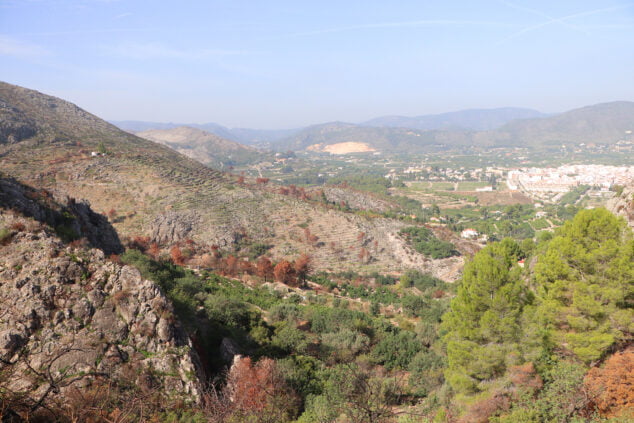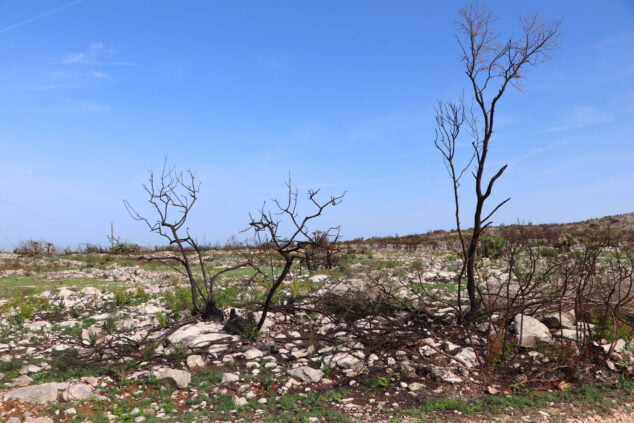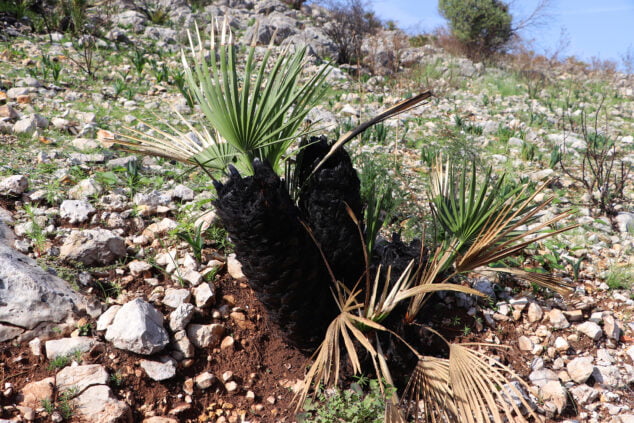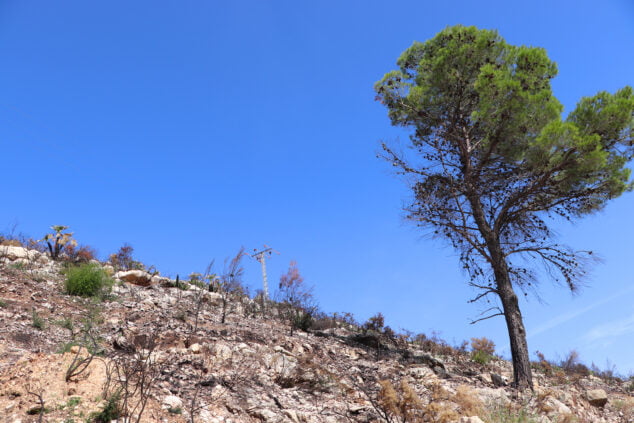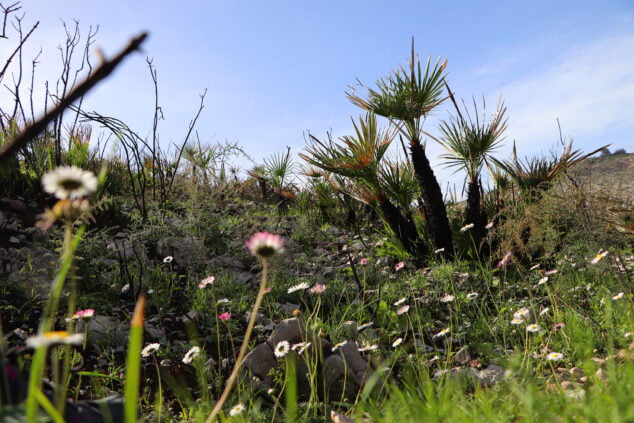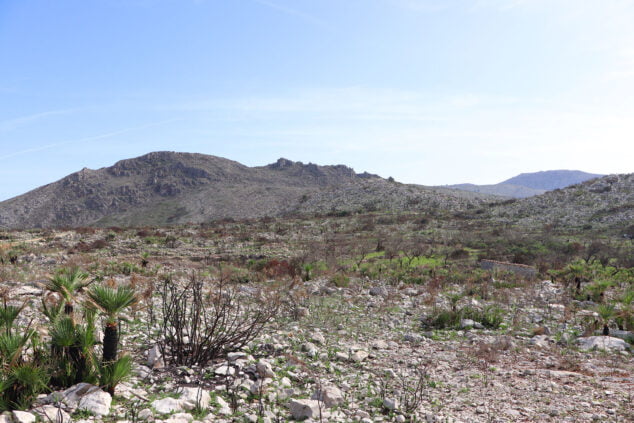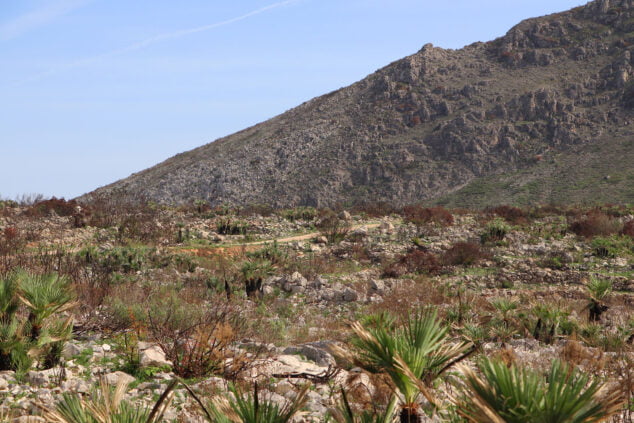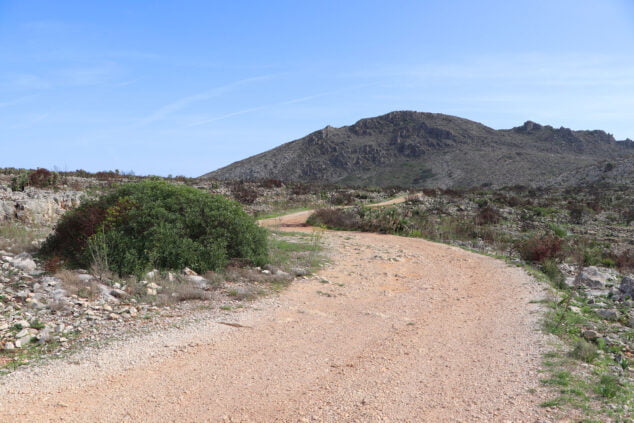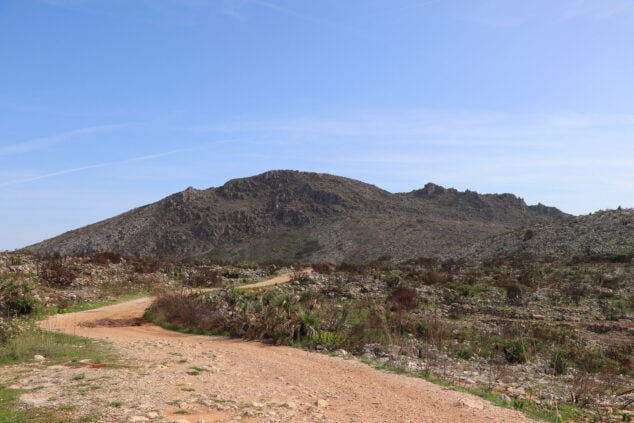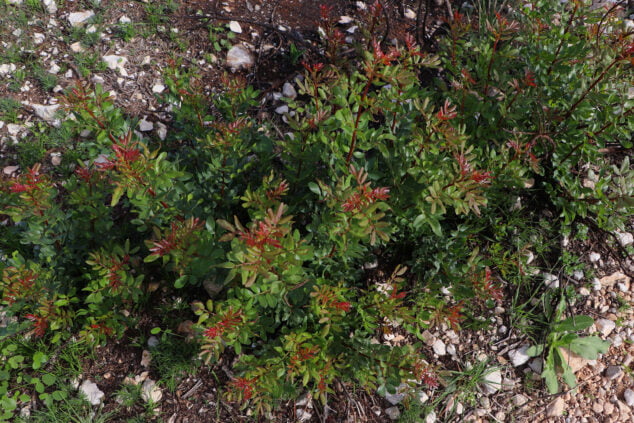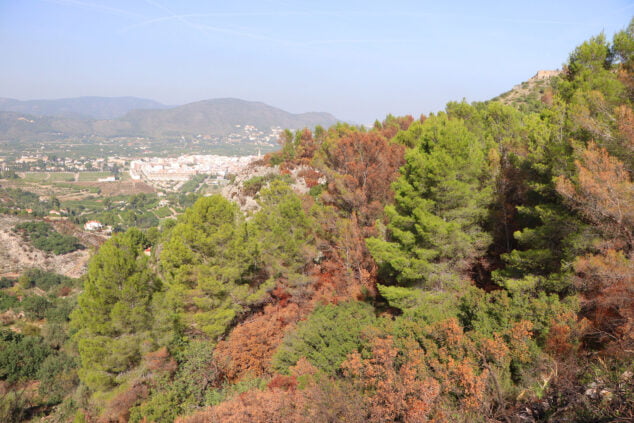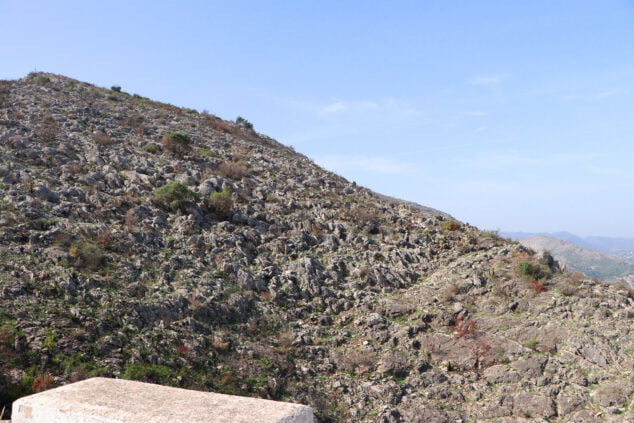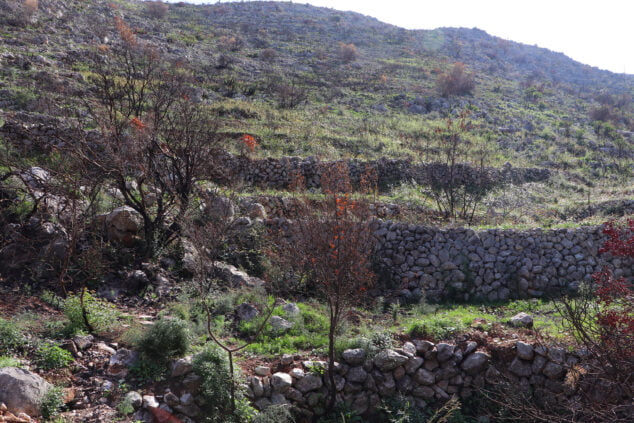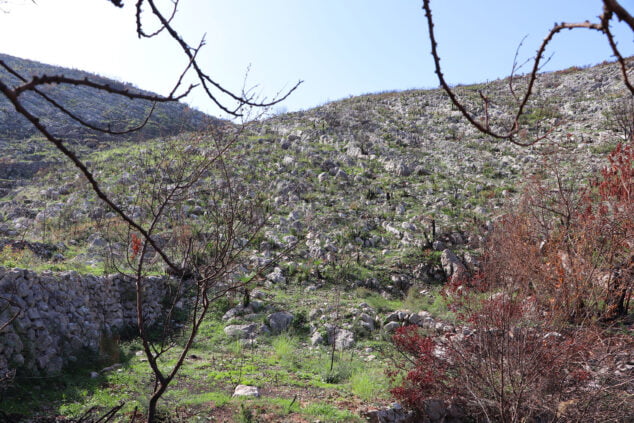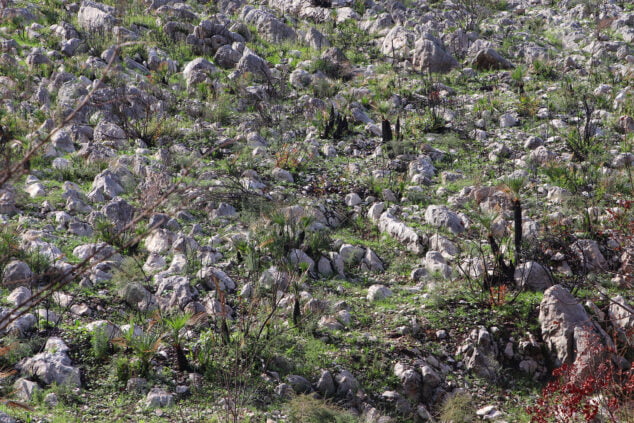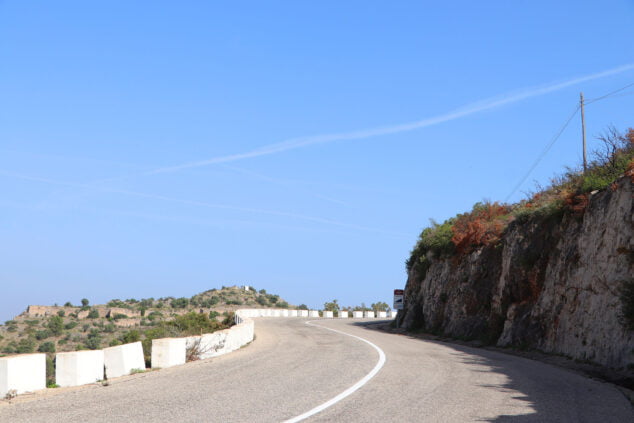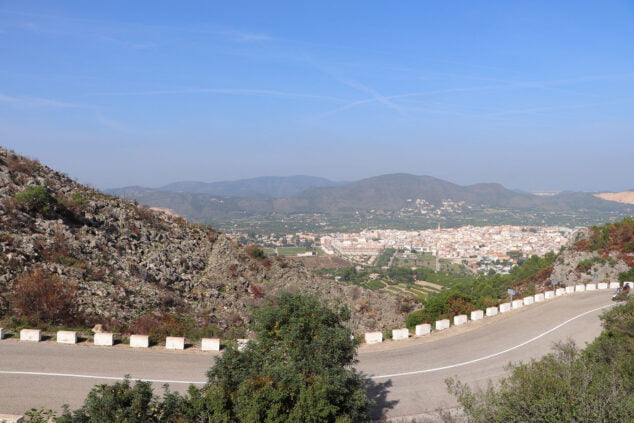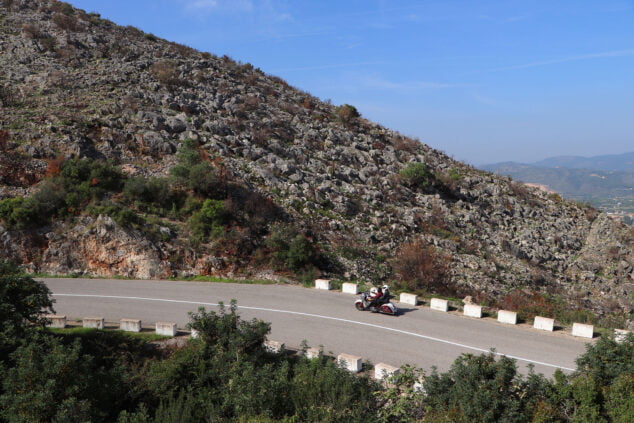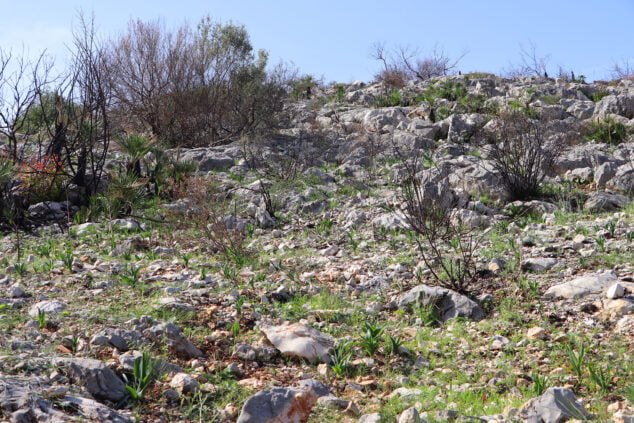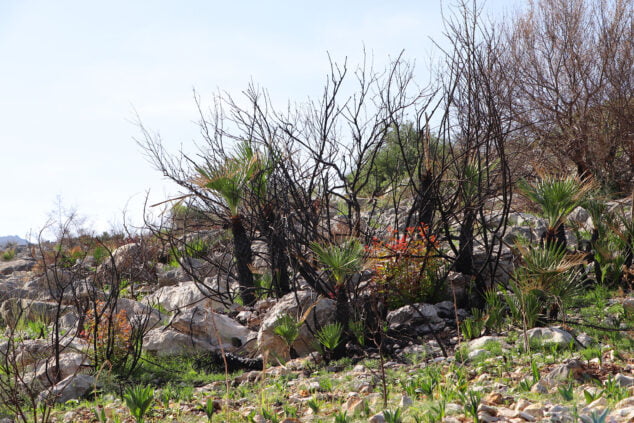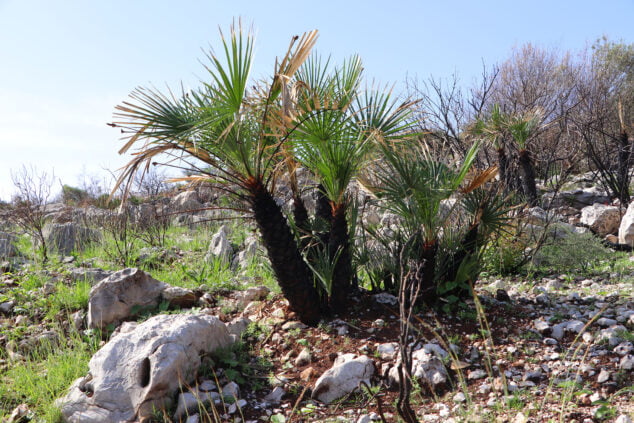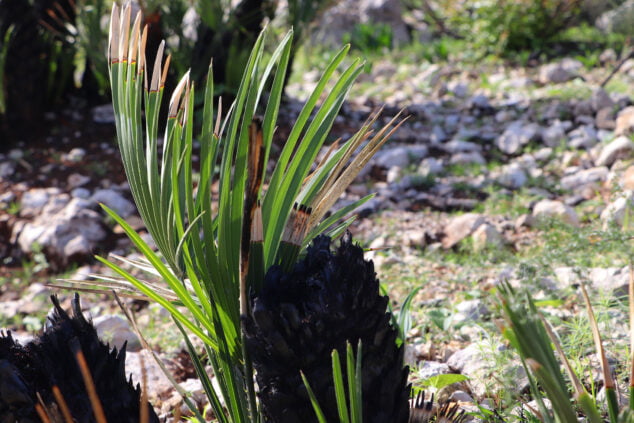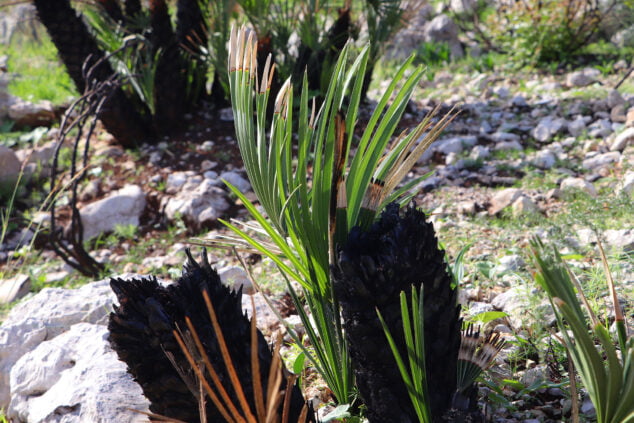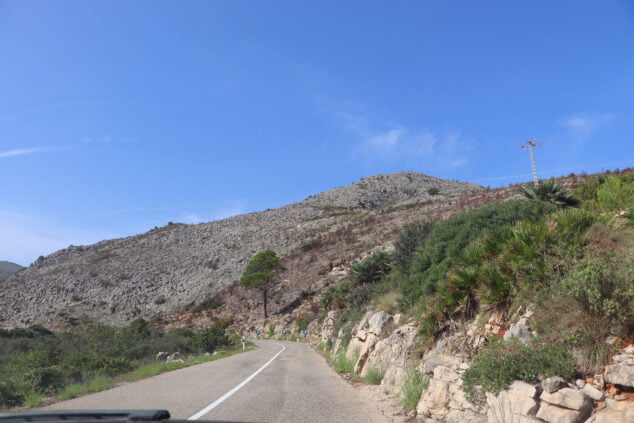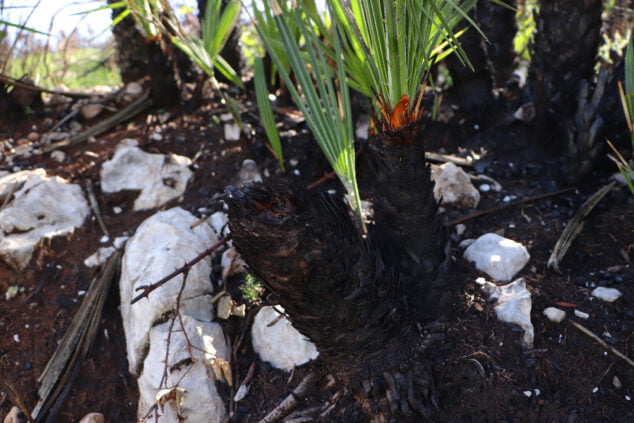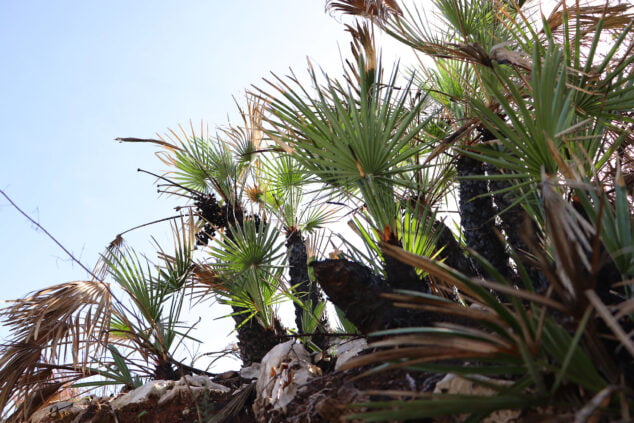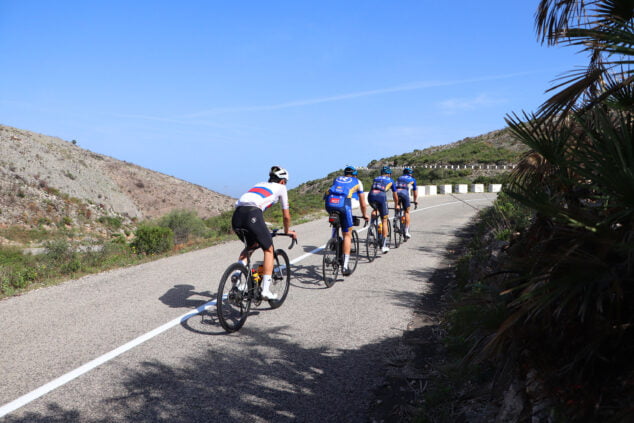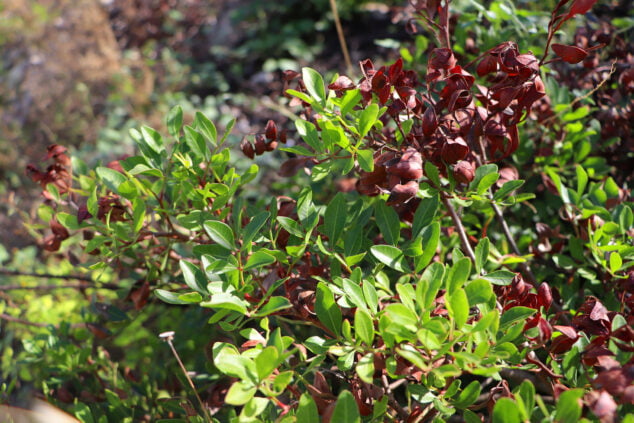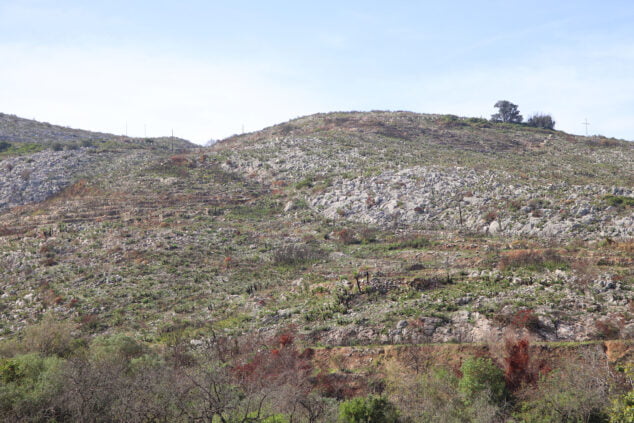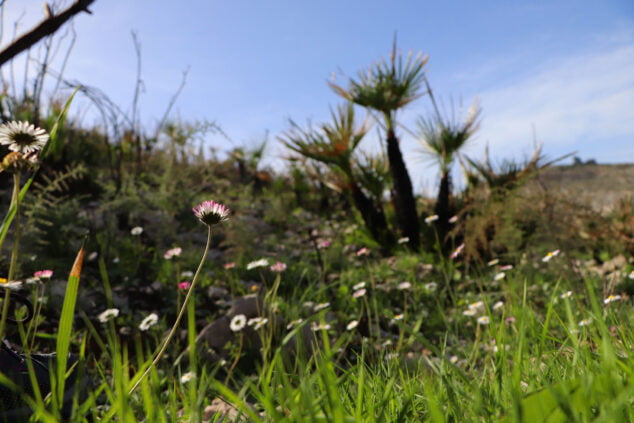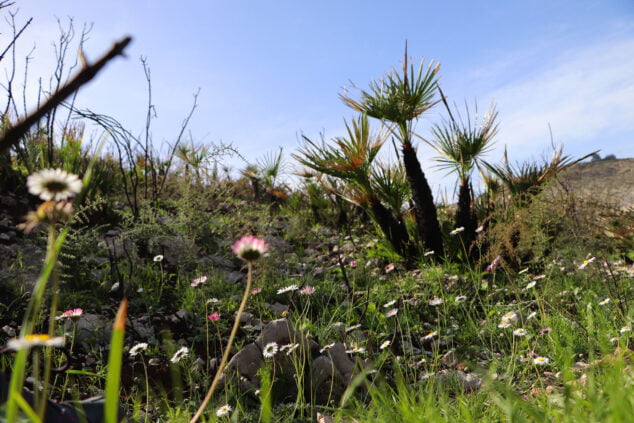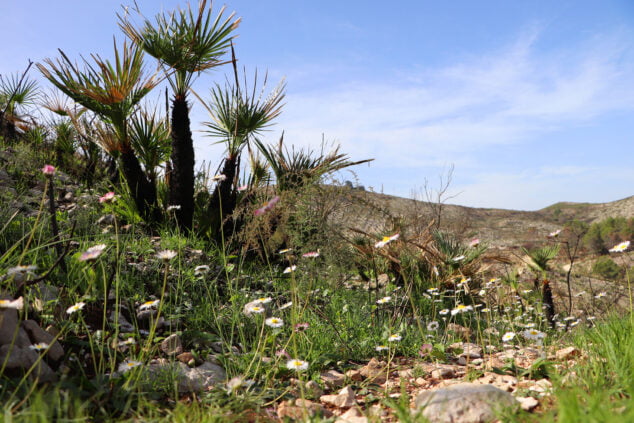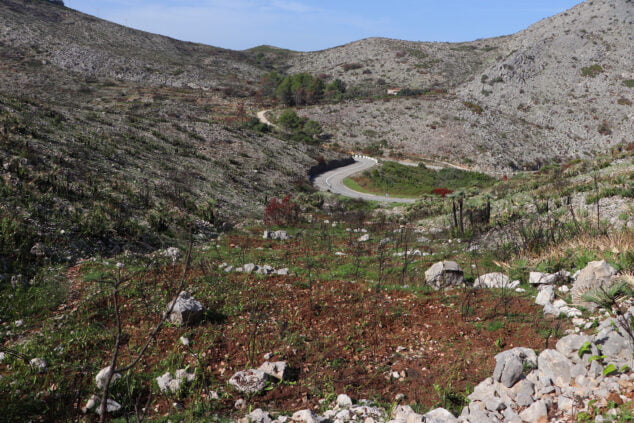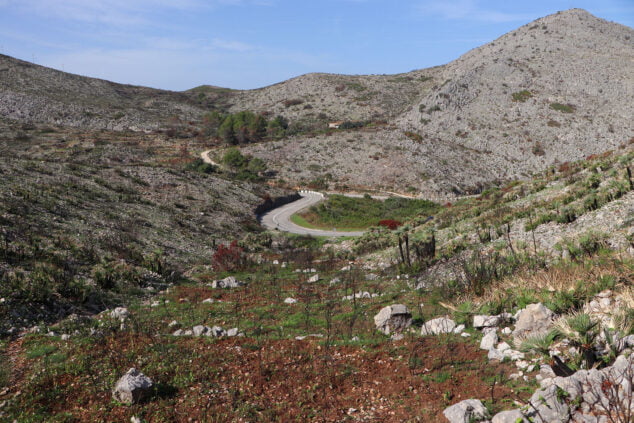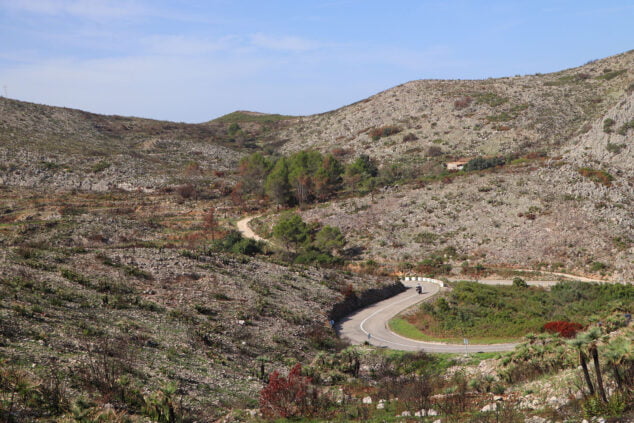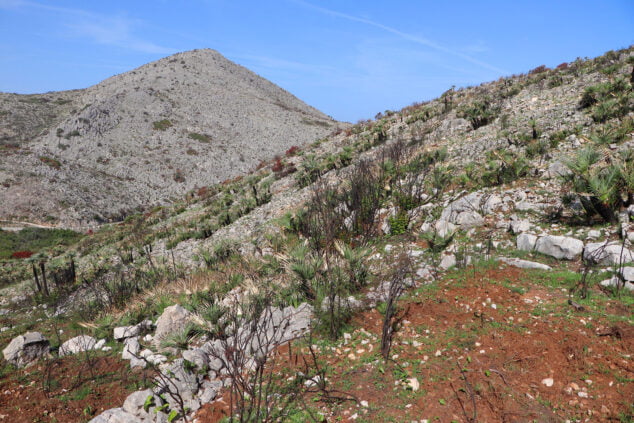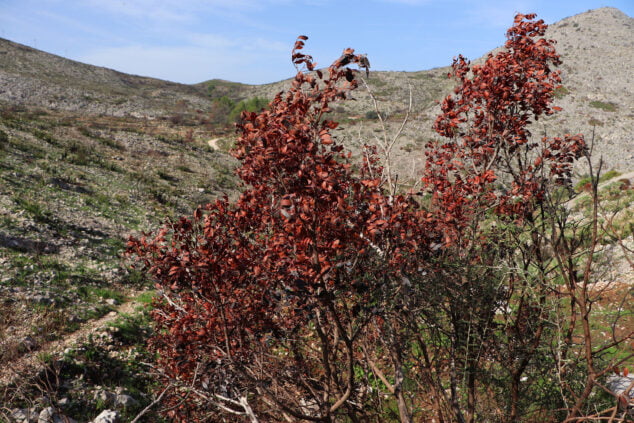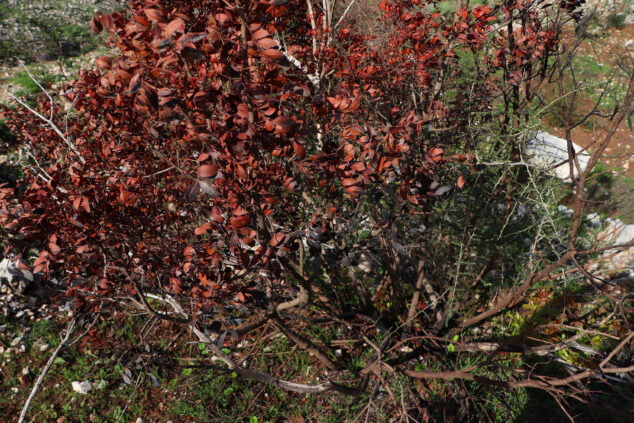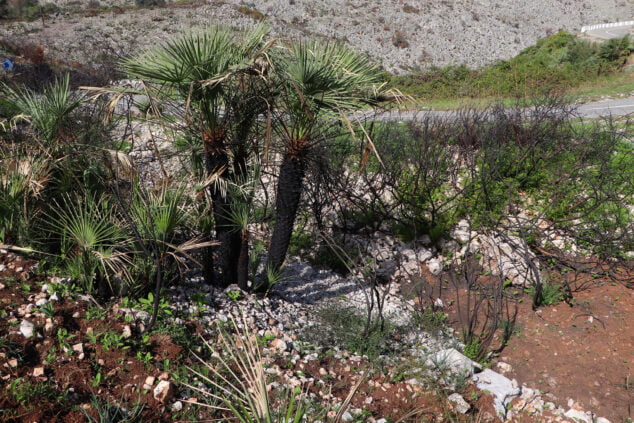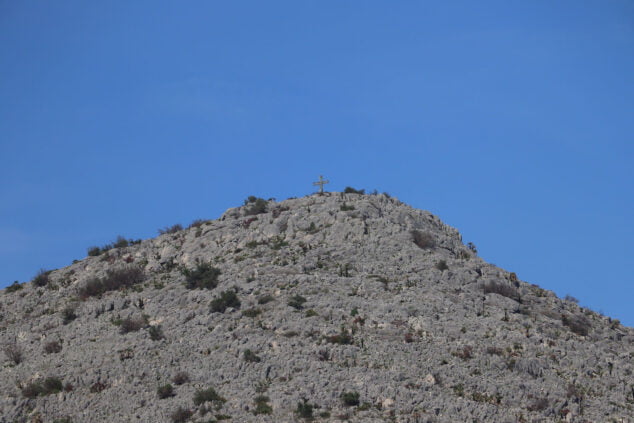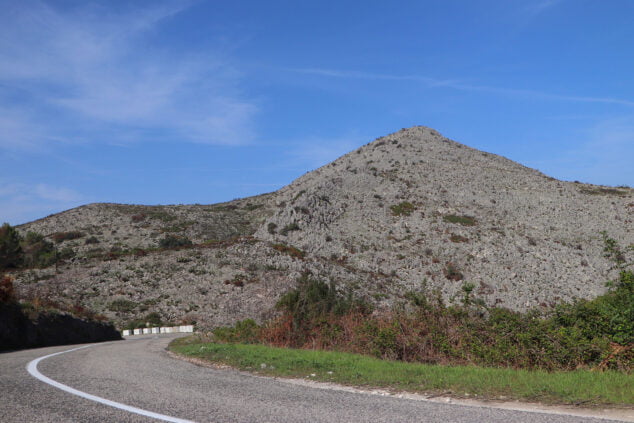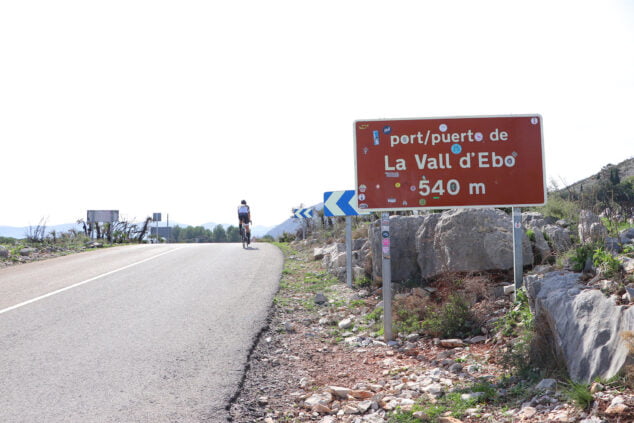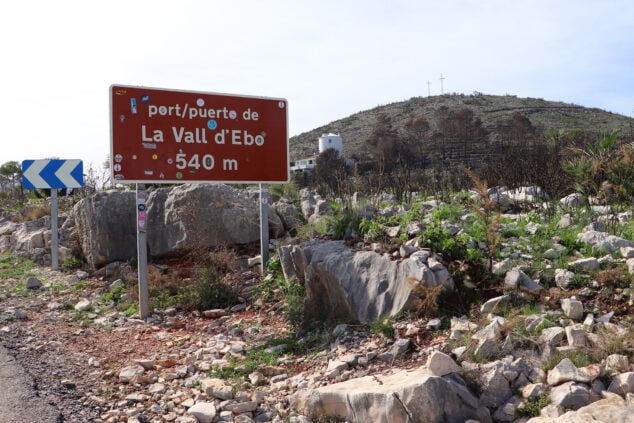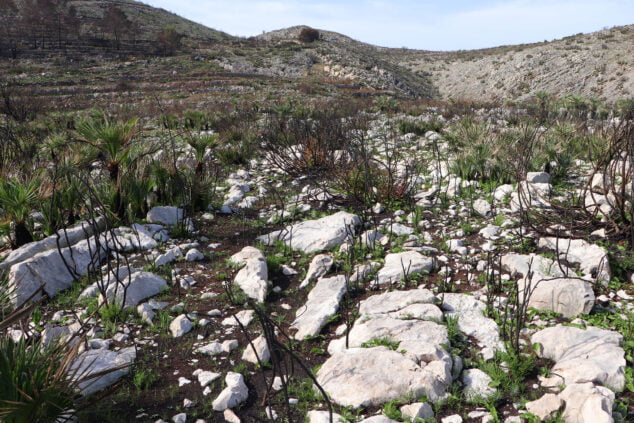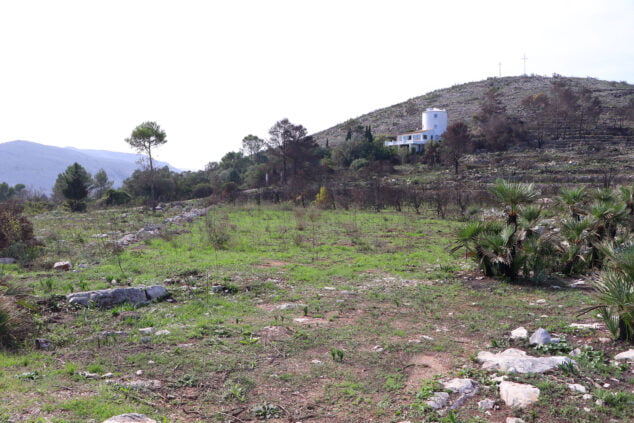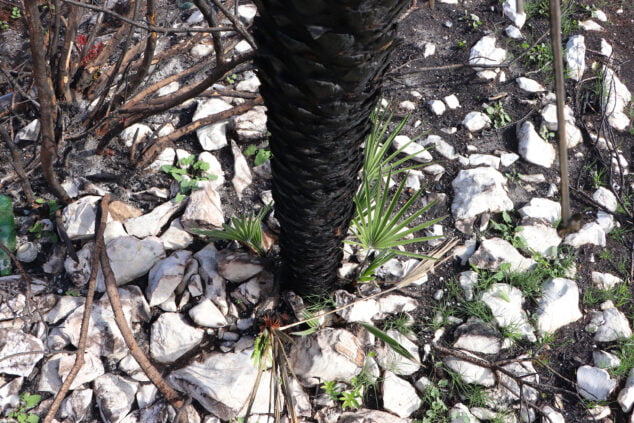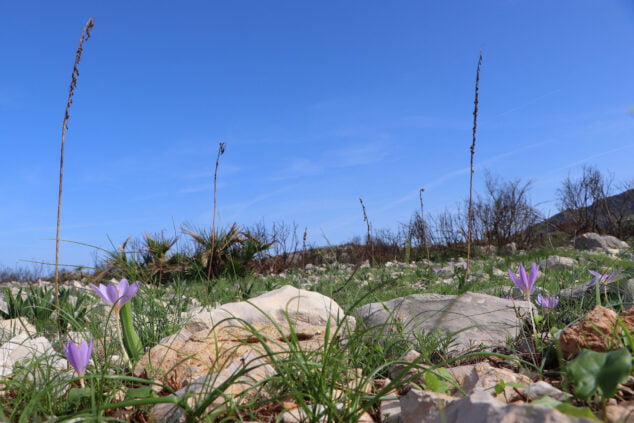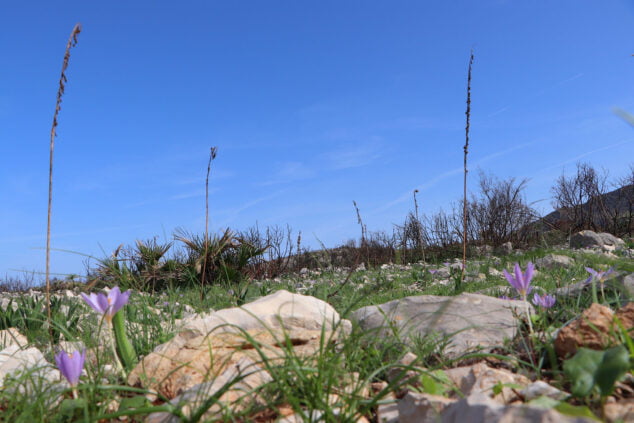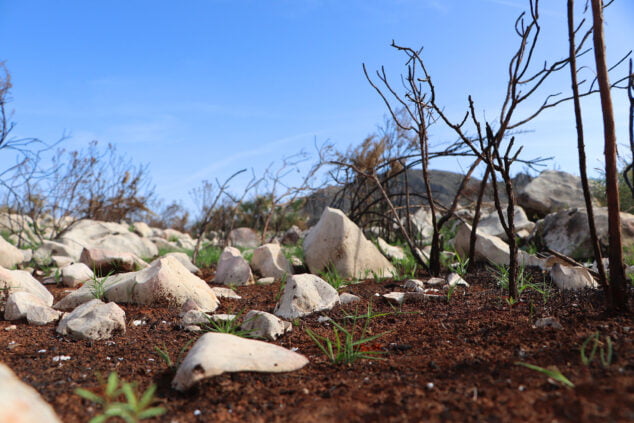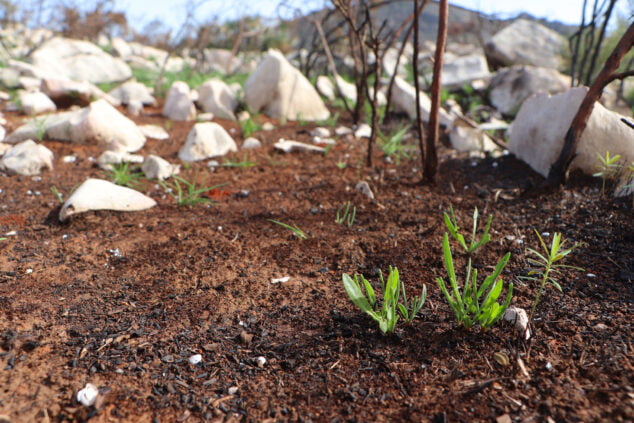Those were hard days, but they still are if you remember what the Vall de la Marina Alta were like before the last great fire that tormented the region. A simple walk is enough for the first thing that comes to mind is “what a pity”. However, it seems that the darkness of the ashes is becoming more and more blurred by the colors of the small and large species that want to sprout again.
Last Thursday, October 27, two months have passed since the complete extinction of the fire that originated in the Frigalet section of the Vall d'Ebo municipality due to lightning. 12.556 hectares burned, according to the latest official counts, and 100 km of perimeter of forest area devastated.
Although it did not only affect les Valls. Apart from the Vall d'Ebo, the Vall de Gallinera, the Vall de Laguar and the Vall d'Alcalà, the flames reached the terms of Pego, Castell de Castells, Sagra, Tormos, Orba, as well as five towns in the neighboring counties of the Comtat and the Safor. Some 79 days after the night the fire started, on August 13, 2022, residents and visitors look to the mountains with hope.
The causes of the problem
If one stops to analyze the causes of large fires beyond the obvious, one will find some patterns that occur in situations like this. One of the groups that looks a little further and that puts its efforts into recovering both the territory and the customs that most benefit nature is Pego Viu. The association was born after another great fire in the Vall d'Ebo and Pego in 2015.
«We want to get citizens to look at the mountains again as a way of life, not as a simple postcard landscape. A place where our ancestors have lived and earned their living. For this reason, we work to make people aware that it is our fault that the mountains are burned, not only of the administrations, but of society and consumption habits, "says Néstor Portes, president of Pego Viu.
The theory that acquires the most strength when observing this type of fire advocates the lack of agroforestry management and depopulation. "It is no coincidence that the Vall d'Ebo has had two major fires in recent years," he says. According to the spokesperson for Pego Viu: “The fires are a consequence of depopulation and this, in turn, is a consequence of the type of economy and the type of politics that we have. The rural world has become depopulated because the policies that have been made have been aimed at the big cities and the coast, which is why the entire economy revolves around that.
In most cases, the towns at risk of depopulation are located in the interior, in this case, of the region. Localities that have been losing neighbors and neighbors who work the land and take care of it in order to live from it.
In fact, the Report on the impact of the Vall d'Ebo forest fire, prepared by the Mediterranean Environmental Studies Center Foundation (CEAM), emphasizes that "the affected area has a markedly rural character, with the absence of large infrastructures , which are basically limited to communication routes, electrical and telephone networks».
And he continues: «These areas, abandoned for decades, are part of a rich cultural heritage currently in a clear process of abandonment and degradation. On the other hand, the economic and social activity derived from tourism and activities in nature may be affected by the fire.
In what situation are the mountains?
The fire, as has been seen, affected a large amount of surface. Not all burned areas have the same characteristics, therefore, each one progresses in its recovery at a different rate from the others. Precisely, the part of the Vall d'Ebo is one in which the mountain is healing best due to the high presence of undergrowth and resprouting shrub species, as Néstor affirms.
In contrast, the part of the Vall d'Alcalà will be the area that costs the most to recover. This territory was populated to a greater extent by adult pine forests. In a normal process of forest growth, to be considered mature, they should be replaced by species such as Holm oaks or oaks, nobler or native classes that better withstand fires. "Unfortunately, the fires break that chain of succession," laments the Pego Viu spokesman.
The CEAM report indicates that 70% of the burned area corresponds to shrubby thickets and that the remaining 30% is wooded area. In addition, 26% of this would be pine forests. Therefore, the areas that will recover the best, those of scrubland, represent a large percentage of the burned territory. Therefore, the natural recovery of the mountains will be quite favourable, since these species are mostly resprouters.
When will we see les Valls fully recovered?
It is difficult to make an approximation, but Néstor ventures to offer some figures based on what was observed in the 2015 fire. «The areas that are worse off, such as the Vall d'Alcalà, to recover all the forests and leave 40 or 50 years must pass from the fire. This will be with the mature forest and without having suffered any other fire in many years », he gropes.
However, he assures that, in some cases, in two years these areas will be filled with small pines that will be born again. The rest of the areas, with autochthonous or shrubby species, such as the Tolls Holm oak in the Vall d'Ebo, the Pego Viu gives them 5 or 7 years to regenerate by themselves.
Natural recovery vs. human management
“That the mountain recovers on its own will apply to 90% of the affected land, because there are not enough people to manage it in its entirety. It is inaccessible, there are no financial or material means to manage it 100%”, explains Néstor. But what will happen to the remaining 10% of the burned forest?
The idea is to act in strategic areas with firebreaks, which are now carved to make cultivated terraces out of them. In addition, to alternate the type of recovery, certain repopulation areas will also be worked with seed dissemination islands. The spokesperson for Pego Viu explains that this will be carried out with “indigenous species that form various forests at strategic points on the mountain so that they themselves help regeneration. It won't be a quick cycle."
Some tasks that will be prudent to start in 2023, since this year the places are still being planned. On the other hand, it will also be necessary to establish agreements both with the owners and with the City Councils and the Ministry of Agriculture and the Environment. Though. Of course, everything necessary will be done, again, so that the Vall recover their lives, which gives them the well-deserved title of lung of the Marina Alta.


